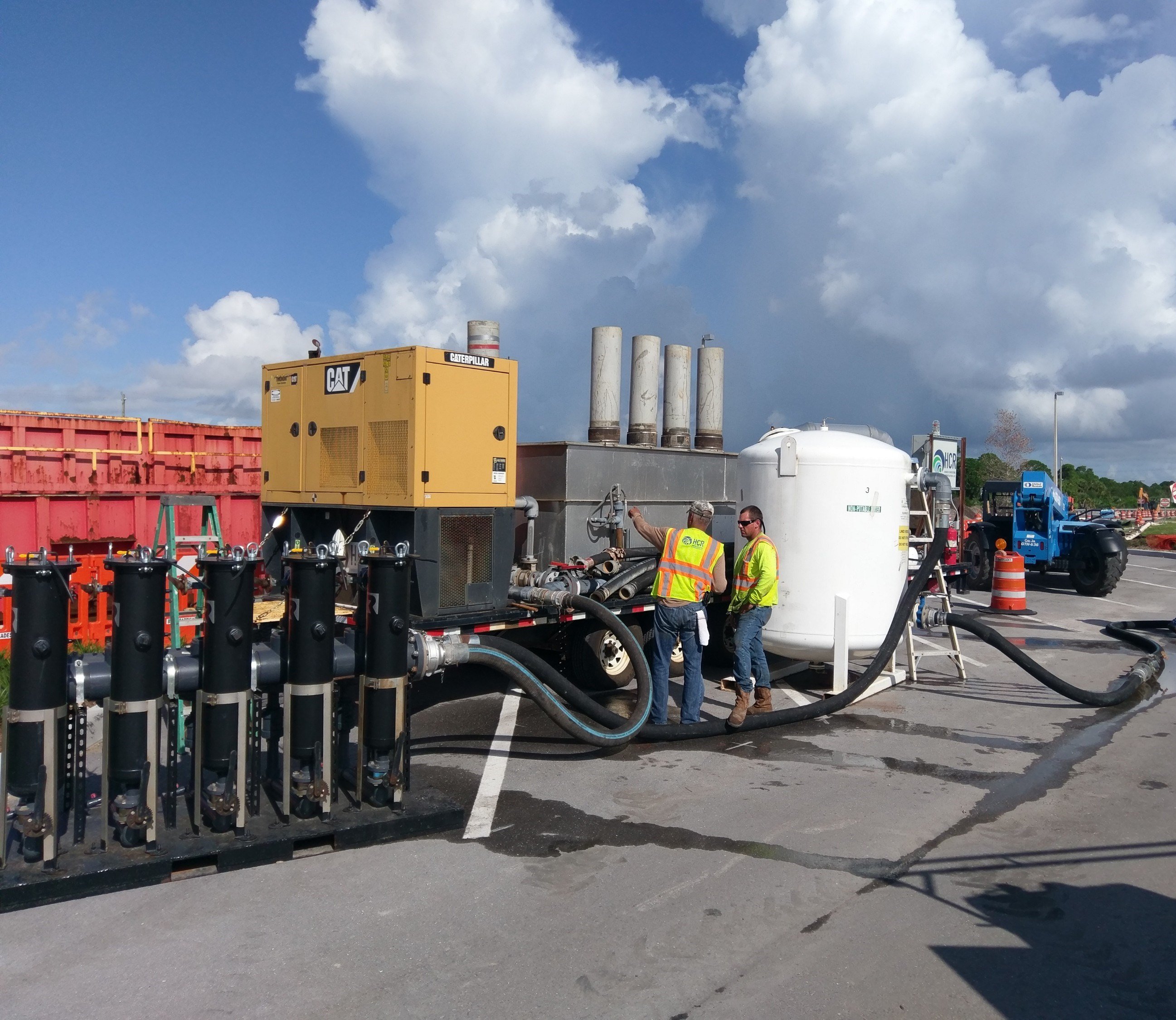
Handex perfoms construction dewatering for many clients. Dewatering of construction sites is a commonly used practice in the State of Florida due to our shallow groundwater table. Contractors providing subsurface installation of utilities or structures deploy dewatering systems in order to provide their crews with a dry area to perform necessary repairs or construction. After repairs or construction installation activities are complete, it is also necessary to continue dewatering to allow the backfill lifts to be properly placed and compacted to achieve the desired density for structural integrity purposes.
Most dewatering systems are fairly simple and consist of well points that are jetted into the ground at a desired depth necessary to achieve draw-down of the water table below the depth of the working zone. The well points are typically installed on 3 inch centers encompassing or adjacent to the work zone. The well points will be connected with swing arms and valves to a 6-8 foot PVC header pipe and suction will be provided using a 6-8 foot vacuum assisted dewatering pump. The water will be drawn from the depth of the well point screens when under suction, effectively lowering the water table in the zone of influence of each well point. The groundwater will be discharged into an onsite pond or nearby stormwater catch basin.
But the chips are on the table when a construction contractor unexpectedly runs into potentially impacted soils and groundwater while excavating for their sub-surface work. At this point, contractors reach out to Handex when this type of construction dewatering activity needs to take place within petroleum-impacted areas. The U.S. EPA requires a National Pollutant Discharge Elimination System (NPDES) permit to monitor and ensure the effective treatment of impacted water prior to being discharged into a stormwater catch basin that ultimately drains into our local waterways. Handex collaborates with our clients to determine the contaminant type and concentration in order to design the proper treatment method to prevent our waterways from being polluted with impacted water from these construction sites.
Handex typically deploys a groundwater treatment system that starts with a 20,000-gallon frac tank. The frac tank stores the groundwater from the dewatering pump while the baffle system allows the suspended solids to settle out. Then a 4 inch pump transfers the water from the frac tank into our 500-GPM air stripper.
Handex’s flatbed mounted air-stripper forces com-pressed air through “bubblers” to agitate the petroleum-impacted water causing the volatile compounds to release or “strip away” from the water. After the water passes through the air-stripper, it is further treated by pumping it through filter bags and granular-activated carbon vessels. This process polishes the water and it is ready to be discharged into the stormwater catch basin.
But, hold on! There is one more crucial step before the water can be discharged. This most important step is collecting a laboratory sample of the post-treatment effluent water as well as pH and flow data. This sample is rushed off to the lab for a 24-hour turnaround time on the results.
While we wait with great anticipation for the river card, the “what ifs” start to come to mind. An effluent sample that fails for one of the NPDES compounds analyzed will require the dewatering system to be shutdown until clearance is regained, causing the groundwater to rise back up to its natural level, submerging the work zone, which is not good. A re-design of the system, adding significant time and cost, also causes delays to the construction contractor, potentially resulting in expensive delay claims for our clients. The pressure is on and the stakes are high! But Handex prevails when our post-treatment effluent samples confirm that the discharge water is clean.
Handex has been providing high-stakes construction dewatering treatment services throughout Florida’s DOT and FDEP programs for decades. We man these treatment systems 24 hours a day, 7 days a week. Because groundwater can rise rapidly when we experience mechanical break-down of equipment, I’d like to give a proper, big-time thanks to Steve Pitts for fielding those emergency phone calls at 2 am and scrambling out of bed in the middle of the night to get our system repaired!



